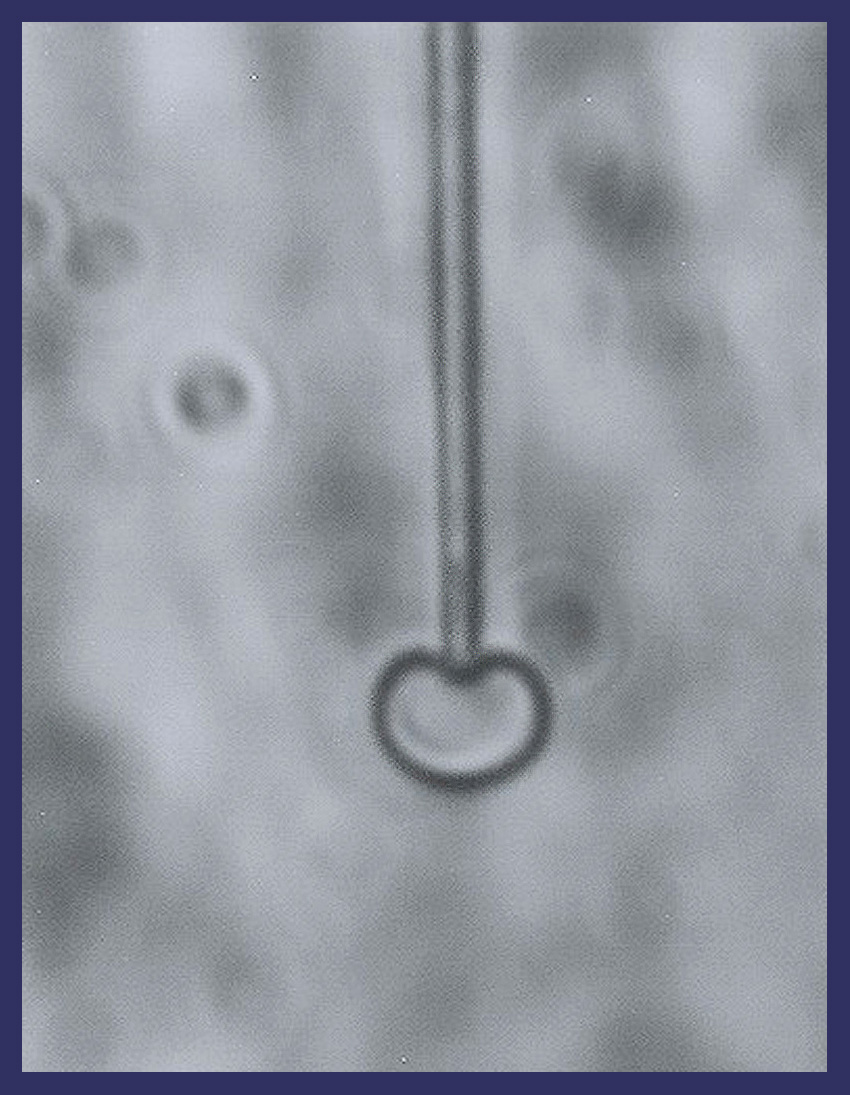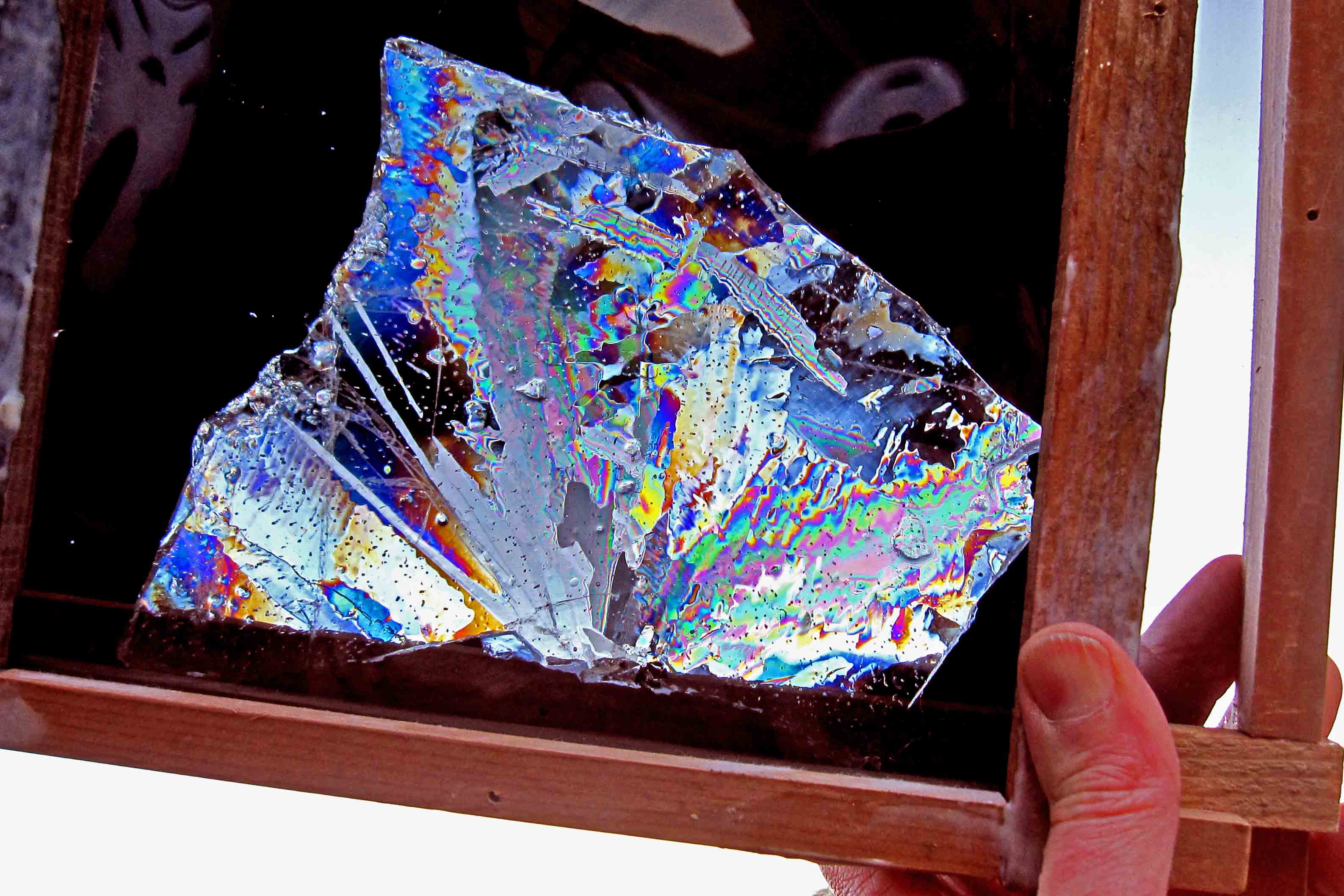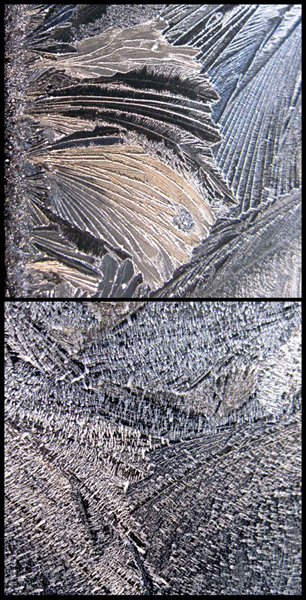Category: "Snow Science"
Ice of Hearts
December 28th, 2009Back when I lived in Boulder CO, I worked with Charles Knight on developing a new way to grow ice crystals for experimental study. I knew that the problem with most methods was twofold: there were too many crystals too close together to be able to learn how each one behaved on its own, and the surface that held the crystal would influence the crystal’s growth. Charlie hit on a great way to eliminate the first problem: put some water in a small pipette (like a narrow, tapering straw) and freeze the water from the wide end. At the tip, which stuck out into a small observation chamber, ice would grow out as a single crystal. Unfortunately, the smallest pipette tip was about a millimeter in diameter, which is too large. I then tried using Dupont hollowfill fibers, which are about 20 times thinner – about as thick as fine human hair. But this was still too thick. So I started using glass capillaries, which I could heat with a small torch to draw down to sizes 100-1000 times thinner than the pipette – about as thin as small cloud droplets before they freeze into ice. We had our method. From the start we would see things that hadn’t been reported before. Some of these things we (or I) published, but most of the things still remain unpublished. One of them is the heart-shaped crystals. The photo below shows the tip of the capillary, which is about 10 times thinner than human hair, along with a thin heart-shaped crystal.
After the heart grew a little more, it developed into a hexagonal shape. But probably the most bizarre thing I saw occurred when I decided, just for kicks, to try to evaporate ice from the inside of a crystal by connecting the wide end of the capillary up to a vacuum pump.
Colors of Ice
December 18th, 2009The farmer's bathtub finally froze over. The surface had an interesting freezing pattern, but I've photographed similar ones many times before. So I picked up a rock, broke the surface, put a chunk between two crossed polaroid sheets and shot a picture.
The colors arise from the birefringent nature of ice, which means that light can pass through crossed polarizers if ice lies in between. But only some colors can make it through both polarizers.
First Frost
December 15th, 2009Here in this neighborhood of Japan, we finally had our first good frost day. By frost, I mean any ice that forms from vapor that condenses (wet or dry) onto a surface. We rarely get snow, typically just one or two short-lived, wet snowfalls over winter, but we often get frost. Frost might be common here because the temperature just dips a little below freezing (0 degrees Celcius), winter skies are often clear, and the humidity is high. For example, in my yard, about seven feet above ground (where I have a safe place for my temperature/humidity meter), the relative humidity last night stayed between 80 and 87% and the air temperature got down to 1.6 Celcius. But the temperature on surfaces exposed to the sky got colder. For example, on some metal plates I put in our carport, the temperature reached -6.0 Celcius. Roofs of cars parked in a more exposed area probably got even colder. The pictures below show frost from two black car roofs.
These pictures show a mixture of two types of frost: windowpane, or film, frost, which is often clear and curvy, and hoar frost, which is white and straight. Film frost grows along the surface; hoar grows out of the surface. For the snow crystal fan who lives in a place with little snow, hoar frost is the next best thing. I say this because hoar grows just like snow - sometimes like a branch of a thin star and sometimes like a column. Film frost is ice that grows in a thin film of liquid water that condensed like dew on the surface. For reasons that remain mysterious, film frost usually curves. After the liquid in the film crystallizes, hoar crystals sprout off the ice, growing upward, away from the surface. In the top image, hoar has just started, but enough has grown to make the curved ice white, in good contrast with the black surface below. In the bottom image, if you look closely, you can see the stubble of hoar whiskers growing as tiny ice columns off the surface (at this magnification, it is hard to determine if the hoar consists of columns or thin-star branches).
The thing that is totally bizzare about film frost is that the ice not only curves, but each curve consists of a crystal structure that twists. Hoar and snow do not twist. To picture what I mean by twist, imagine holding a huge snow star and twisting each branch in such a way that the crystal resembles a six-blade propeller. Real snow doesn't twist, but film frost does. Because the hoar grows off the twisting ice, the hoar columns tilt differently in different regions. You can see this if you look closely at the bottom image.



